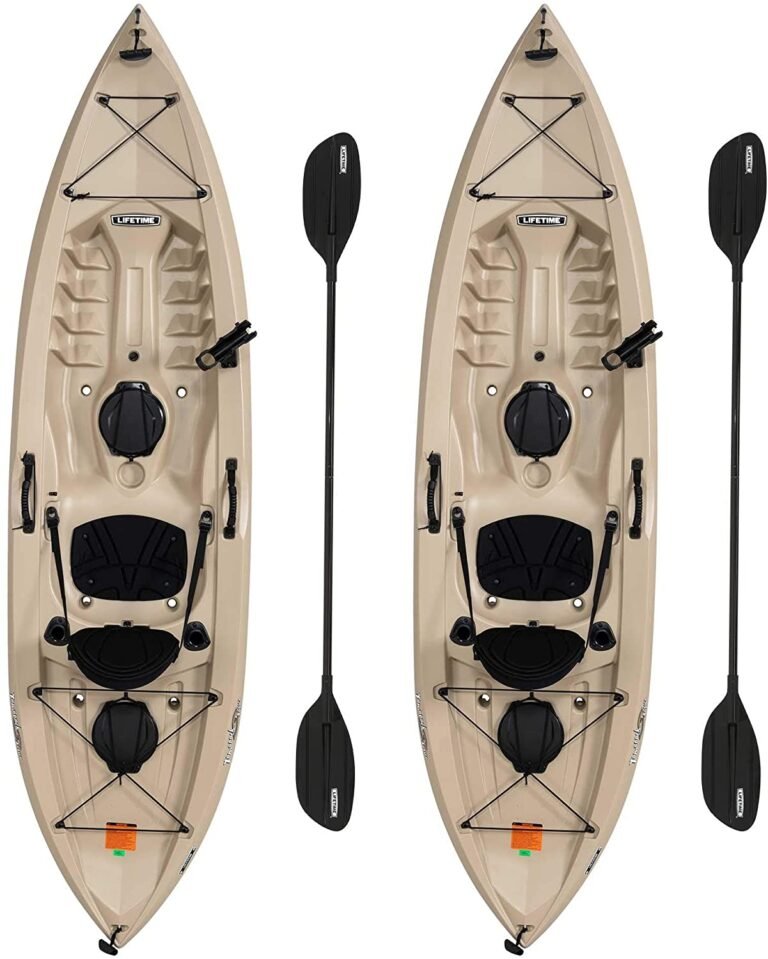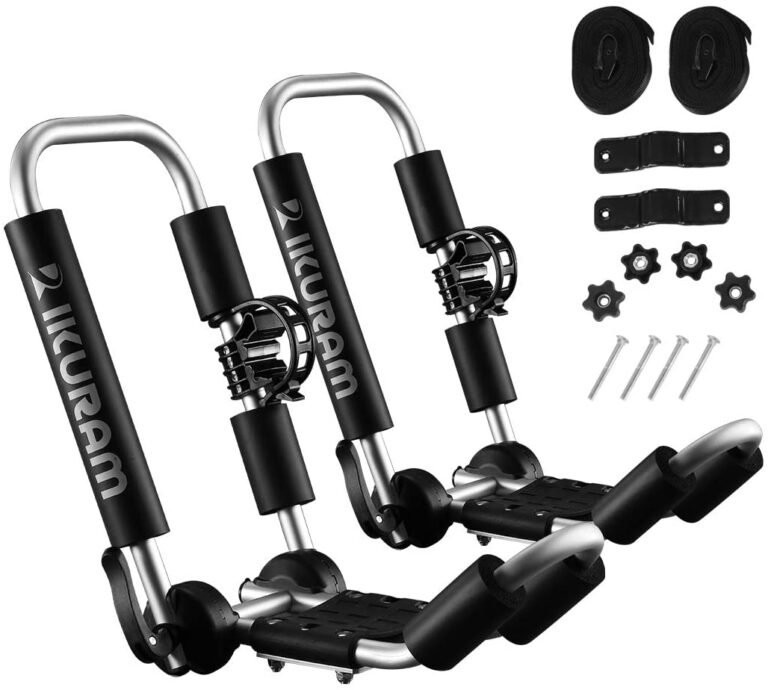What Is The Weight Limit For Kayaking?

Kayaking is a popular paddle sport that can be enjoyed by people of all ages and fitness levels. The sport involves navigating a kayak with a double-bladed paddle and is a great way to work out.
Kayaks are a great way to explore waterways, and for many people, they provide a sense of freedom like no other type of watercraft. But before you buy or rent a kayak, it’s important to know the weight limit for kayaking.
Kayaks are designed to carry a certain amount of weight, and exceeding that limit can cause the kayak to flip over or even sink.
What Is The Weight Limit For Kayaking?
To avoid dangerous situations, kayak manufacturers specify the weight limit of every kayak to help paddlers and anglers know how much weight their watercraft can endure before entering dangerous territory.
If you weigh more than a kayak can handle or wish to bring more things, fret not. Kayaking is a sport for all, and all you need to do is get a larger kayak better suited to your activities. The general weight limits for the types of kayaks are given in this article.
Can I Kayak In A Kayak That Is My Weight?
As stated before, kayaks have weight limits that must not be exceeded. That means anything below the stipulated limit is safe, while the limit itself is borderline territory.
If you weigh 250 pounds, for instance, and the kayak’s weight limit is also 250 pounds, you will be able to paddle the kayak normally but with risks.
Since your weight equals that of the kayak, there will be a lot of drag, resulting in you using a lot of effort while paddling. The problem arises from the fact that while the kayak still floats, it loses most of its stability and maneuverability, making it stressful to navigate safely.
This will result in you quickly getting tired and most likely not enjoying your adventure. You will face a similar problem if you weigh less than the weight limit of the kayak, but together with your gear, the kayak carries its weight limit.
For the most enjoyable paddling experience, it is advisable that, together with your gear, the kayak carries less than its weight limit.
Paddler Size and Weight Limit
Now that we’ve established that the weight limit of a kayak should not be reached, how do you determine the ideal weight that will allow for a safe experience while kayaking?
Generally, if you overload a kayak, it should be 75% of its weight capacity. That way, the vessel will be quite stable and easily maneuverable while allowing you to have a great workout at the same time.
If you wish to push the boundaries of speed, stability, and maneuverability of a kayak, you should load it to 50% of its weight capacity.
For instance, if you own a 300-pound kayak, to kayak safely, the maximum weight in the kayak should be 75% of its weight capacity, which is 225 pounds.
That means if you weigh about 200 pounds and carry gear weighing 25 pounds, this kayak will be ideal for you. If you weigh 225 pounds, you will be able to paddle enjoyably in the same kayak, but only if you don’t bring additional gear.
Remember that for ideal performance, the kayak should be loaded to 75% of its weight capacity.
Does The Weight Limit Mean A Dry Boat?
While all kayakers love being on the water, not all of them love getting wet while paddling, and some go to great lengths to avoid the water.
It is thus no surprise that this question is one commonly asked by kayakers. The truth is that staying below the weight limit does not necessarily eliminate the water factor.
For the most water-free experience, the kayak should be loaded to half its weight capacity while paddling.
This means if the kayak’s weight capacity is 300 pounds, it should carry 150 pounds for the paddler to have the least contact with the water. The 150 pounds could be the paddler’s weight alone or the combination of his weight and that of his gear.
Average Weight Limit For Kayaks
Different types of kayaks exist for different activities and they all have weight limits for the safety of the paddler.
Recreational Kayaks
These vessels are for fun paddling and are designed for flat water use. They are great for relaxation. They have a weight limit of 200 to 300 pounds.
Sea Kayaks
Also called touring kayaks, these vessels are designed for long trips or expeditions. They are also for flat water use. Sea kayaks have a weight limit of 250 to 350 pounds.
Sit-On-Top Kayaks
Famously used for fishing, these kayaks are often heavy and are perfect for spending time with family. They have a weight limit of 350 to 400 pounds.
Tandem Kayaks
Designed for two paddlers, these watercraft are perfect for families wishing to spend a relaxing time on the water. Tandem kayaks have a weight limit of 500 to 600 pounds.
Inflatable Kayaks
These kayaks are perfect for those who don’t want to have to deal with transporting or storing traditional kayaks. Inflatable kayaks have a weight limit of 400 to 750 pounds.
Whitewater Kayaks
Designed to give exhilaration by navigating rapids, these kayaks have high weight limits with some able to handle up to 800 pounds.
Can I Increase The Weight Capacity Of My Kayak?
Sadly, the answer to this is no. The weight limit of a kayak is something decided during manufacturing and is influenced by several factors including the intended purpose of the kayak and the materials used in its manufacturing.
That is why it is impossible to change the weight limit of a finished kayak. You just have to adhere to it for your safety on the water or get a bigger one if you must go with all that gear.
What Happens Should You Load Your Kayak Over Its Weight Limit?
Mankind has always been curious and often wonders what happens when I break the rules. Well, if you break these rules you are in for a tough time on the water.
If you are lucky or you only slightly overloaded the vessel, all you will experience will be difficulty in paddling as your stability and maneuverability will be compromised.
If you are unlucky, however, or took the overloading too far, you could be dealing with problems like swamping and capsizing of your watercraft. It is best to play it safe and avoid overloading your kayak.
But if you must experiment, make sure you are both physically and mentally prepared and be sure to do so in a controlled environment.
Kayaking is a great way to get active and enjoy the outdoors. It is a low-impact exercise that is suitable for all ages and fitness levels.
The weight limit for kayaking is generally 250 to 300 pounds, but it is important to consult with your kayak dealer to ensure you are choosing the right kayak for your needs.
Remember that for safety and an enjoyable paddling experience, the kayak should be loaded to 75% of its weight capacity.
This 75% could be just the kayaker’s weight or his weight and that of his gear. Always employ safe kayaking practices and be safe on the water.






